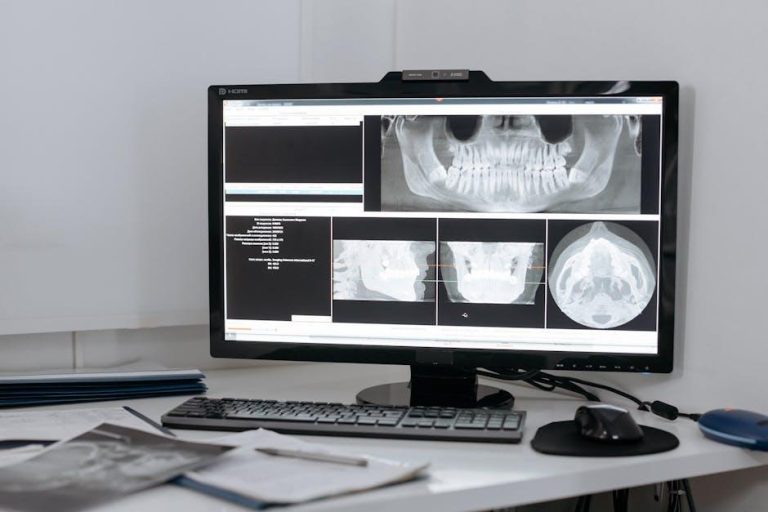
Dental Imaging Tech Boom: AI & 3D Scanners Reshaping the $6B Market
The dental industry is undergoing a transformative leap like never before, fueled by groundbreaking AI-powered innovations and advanced 3D dental scanners. According to recent insights published by PR Newswire, the global dental imaging technology market is slated to surpass $6 billion as these cutting-edge solutions redefine diagnostics, treatment planning, and patient outcomes.
In this comprehensive article, we’ll explore how artificial intelligence (AI) and 3D scanning technologies are revolutionizing dental imaging, the benefits they bring to dental professionals and patients alike, key market growth factors, practical usage tips, and real-world applications changing dentistry today.
The Current Landscape of the Dental Imaging Tech Market
The dental imaging sector has historically depended on traditional X-rays and 2D imaging. However, the surge in minimally invasive dental procedures and personalized care has accelerated adoption of more precise and efficient tools. The integration of AI algorithms with 3D scanners has significantly enhanced image clarity, interpretation speed, and diagnostic accuracy—dramatically impacting the $6 billion global market.
| Market Segment | Estimated Value (2024) | Annual Growth Rate |
|---|---|---|
| AI-Powered Imaging Software | $2.1B | 14.5% |
| 3D Intraoral Scanners | $1.8B | 13.7% |
| Cone Beam Computed Tomography (CBCT) | $1.5B | 12.2% |
| Traditional Imaging Devices | $600M | 3.1% |
How AI & 3D Scanners Are Revolutionizing Dental Imaging
AI and 3D imaging present a powerful synergy in modern dental practices. Here’s how:
1. Enhanced Diagnostic Precision
Thanks to machine learning, AI systems analyze complex imaging data with higher accuracy, detecting anomalies such as cavities, fractures, or periodontal disease earlier and more reliably than conventional methods.
2. Streamlined Treatment Planning
3D scanners capture detailed models of a patient’s oral anatomy in real time. This allows dentists to devise highly customized treatment plans—from implants to orthodontics—improving predictability and outcomes.
3. Reduced Patient Discomfort and Time
Non-invasive 3D scanners replace traditional molds and impressions, reducing discomfort. AI expedites image processing and diagnosis, significantly shortening appointments and follow-up times.
4. Better Patient Education & Engagement
3D visualizations powered by AI algorithms enable dentists to show patients clear, interactive images of their dental health, boosting confidence and adherence to recommended care.
Key Benefits of AI & 3D Scanning in Dental Imaging
- Improved diagnostic accuracy leading to earlier detection of dental issues
- Personalized treatment solutions tailored from precise 3D scans
- Cost-effectiveness over time due to fewer errors and repeat visits
- Enhanced patient experience with faster, less invasive procedures
- Data-driven decision making employing AI’s analytic power
Practical Tips for Integrating Dental Imaging Tech in Your Practice
For dental professionals considering adopting AI and 3D scanning solutions, here are some practical tips to optimize implementation:
- Choose user-friendly software and devices: Ensure the imaging technology integrates seamlessly with existing practice management systems.
- Provide staff training: Invest in comprehensive education on AI and 3D scanner operation to maximize benefits.
- Focus on patient communication: Use imaging results during consultations to educate and engage patients.
- Continuous software updates: Keep AI algorithms updated for improved accuracy and new features.
- Validate technology vendors: Select trusted brands with proven reliability and good service support.
Case Study: Transforming Orthodontics with 3D Scanners & AI Imaging
One leading orthodontic clinic in California integrated AI-powered diagnostics with 3D scanners to enhance treatment planning. They reported:
- 30% reduction in treatment duration due to precise modeling
- 50% decrease in need for physical impressions
- Patient satisfaction scores increased by 25%
The combination allowed clinicians to simulate movement outcomes with AI predictions, revolutionizing patient-specific braces and aligners.
The Future Outlook: What to Expect in Dental Imaging Market
Driven by rapid advancements and growing healthcare digitization, the dental imaging market is expected to continue robust growth. Key trends include:
- Expanded AI capabilities: Deep learning will enable predictive analytics for preventive care.
- Portable and handheld 3D scanners: Facilitate remote and point-of-care dental imaging.
- Augmented reality (AR) integration: Assist dentists in live surgeries with real-time overlays.
- Increased interoperability: Integration of imaging data across healthcare platforms enhancing holistic oral care.
Conclusion
The dental imaging technology sector is witnessing a remarkable boom fueled by AI and 3D scanners. These innovations are reshaping diagnostics, treatment precision, patient experience, and overall dental practice efficiency. For the $6 billion global market, embracing these technologies isn’t just an option—it’s becoming essential for staying competitive and delivering top-tier dental care.
For dental professionals and patients, the future is bright—with easier, faster, and more accurate dental imaging creating a new paradigm in oral healthcare. Stay informed, adopt smart technologies, and embrace this digital revolution transforming dentistry around the globe.


